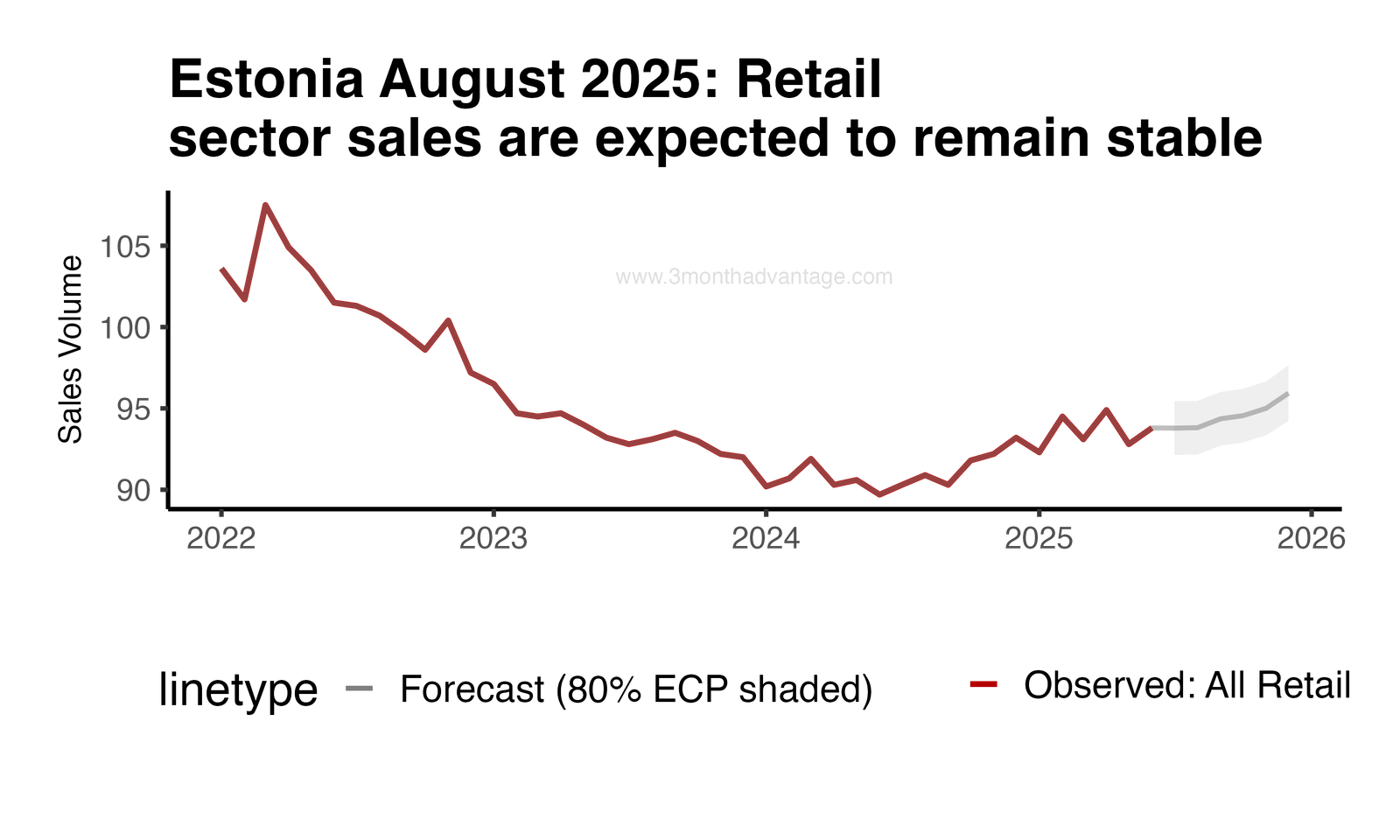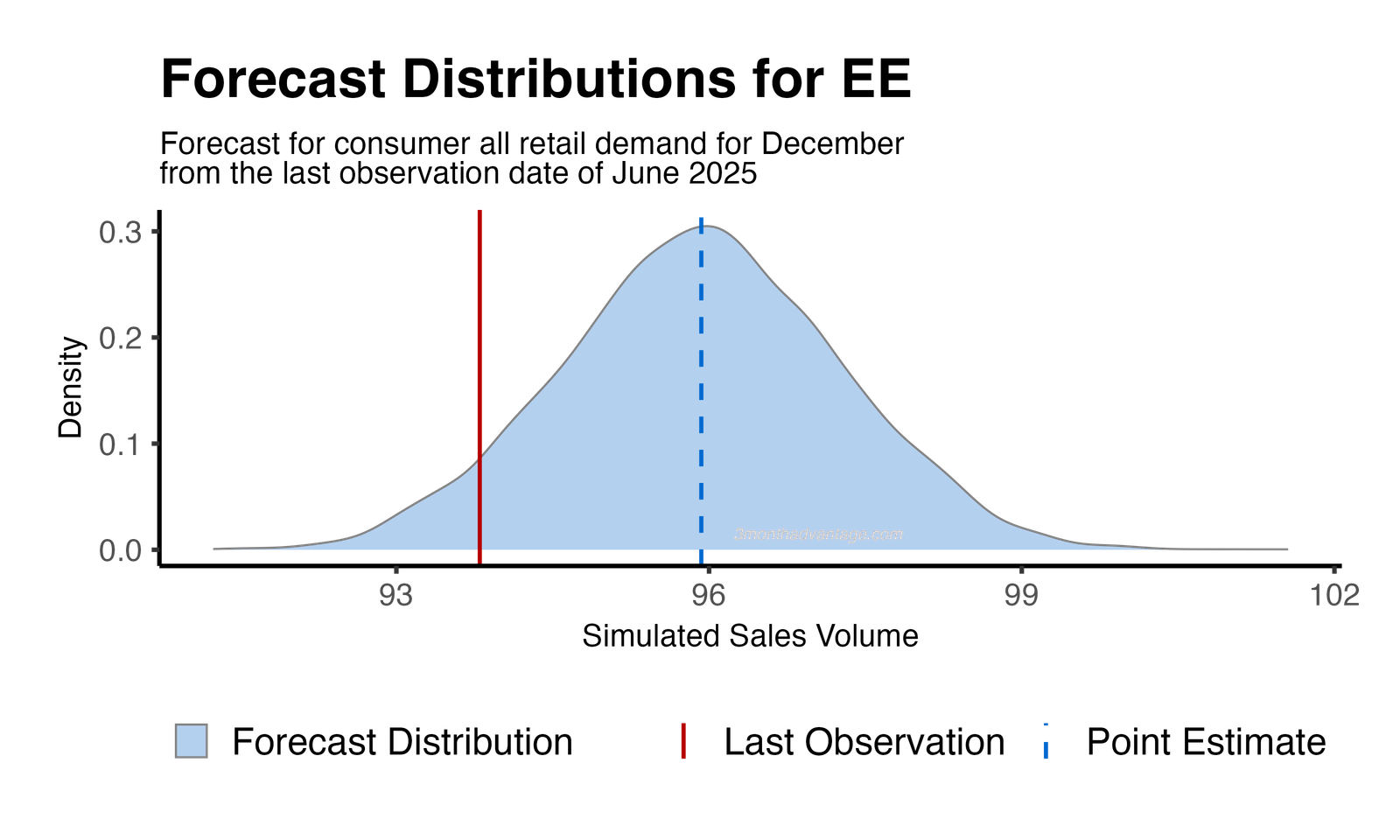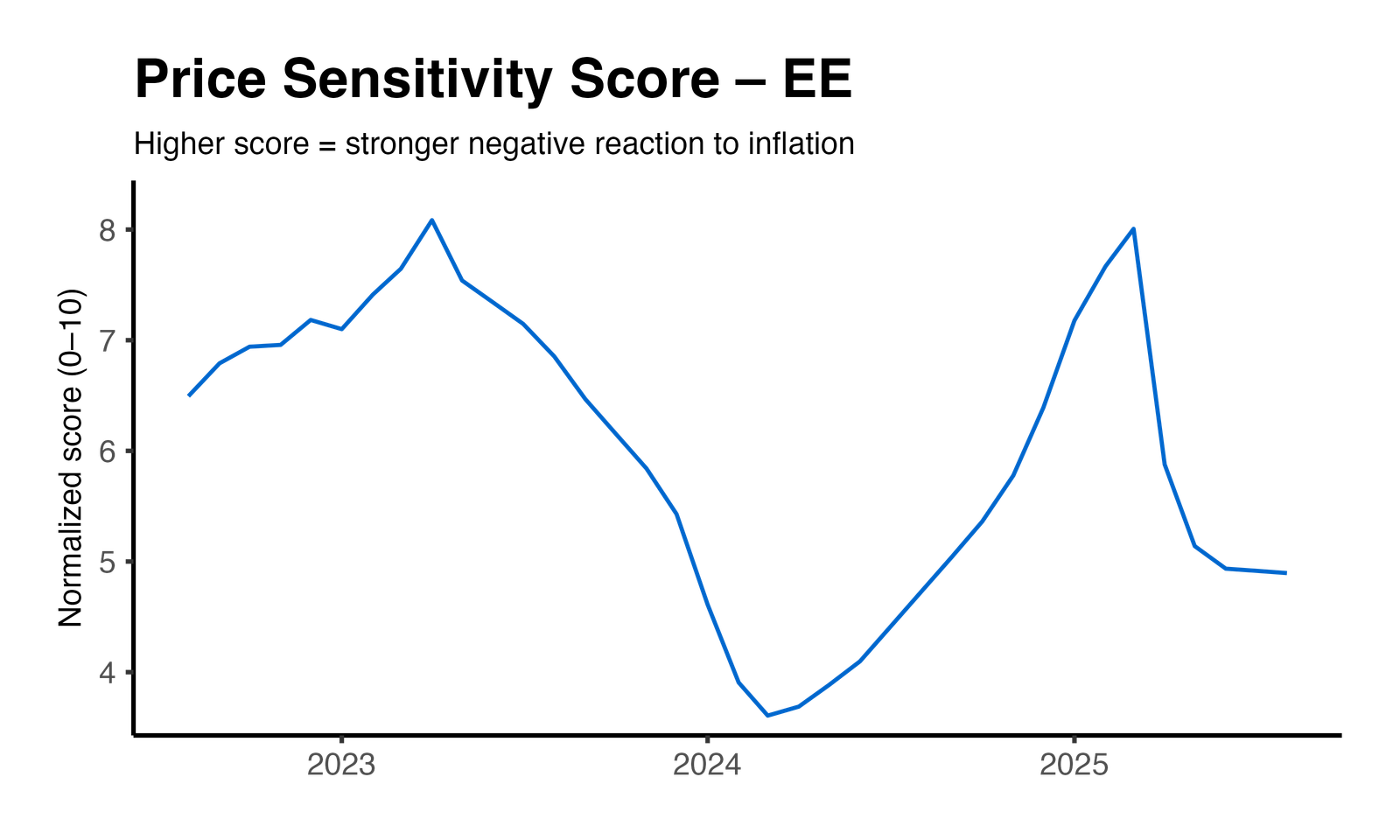
The retail sector in Estonia is expected to see no growth in August, with month-on-month momentum also staying at 0.0%. However, by December, sales are expected to rise by 2.3%. The three-month forecast volatility in the sector is currently at 0, showing a decrease of 0.59 from the previous year. These projections are based on the Eurostat consumer retail index data, indicating a stable yet modest growth outlook for the rest of the year.

The forecast for the retail sector from June 2025 to December 2025 indicates a 95% probability of increased demand. The distribution curve illustrates forecast uncertainty, with the peak representing the most likely demand levels and the tails indicating less probable outcomes. This suggests a strong confidence in growth, with some variability in the extent of the increase.

In the past year in Estonia, the normalized elasticity score increased by 4% year-over-year, while the volatility of this score decreased by 12% year-over-year. This suggests a slight increase in market sensitivity and a slight decrease in volatility, making the market highly sensitive compared to peers. These figures are based on a multilevel model with macroeconomic controls, showing a statistically significant price-effect p-value of less than 0.01. The business implication is that companies should consider more dynamic pricing or promotional strategies to take advantage of the increased market sensitivity.

Method: Price Elasticity Insights